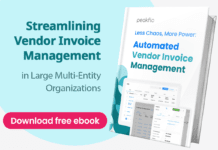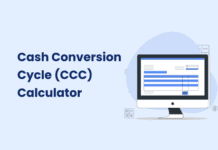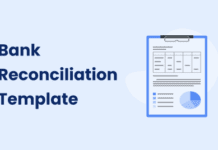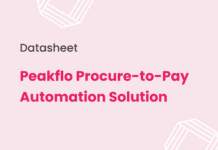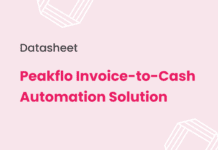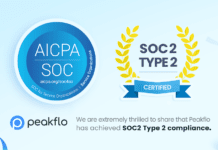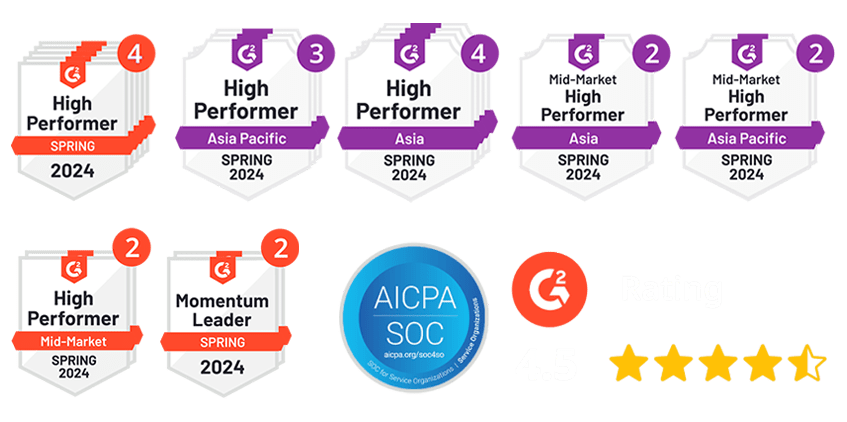Invoice processing stands as a cornerstone of procure-to-pay management within any organization. Smooth and efficient handling of invoices is vital for nurturing robust vendor relationships and upholding the seamless flow of business operations. It involves meticulously verifying, recording, and authorizing invoices for payment, ensuring accuracy and timeliness at every step.
The process demands a keen eye for detail and a commitment to adherence to payment schedules. Delays or errors in invoice processing can disrupt cash flow and strain vendor relationships.
This comprehensive guide will outline the essential steps that finance teams should follow when undertaking the invoice processing procedure. Additionally, this article will discuss the advantages of automated invoice processing to save costs, eliminate errors, and enhance efficiency in your accounts payable processes.
What Is Invoice Processing in Accounts Payable?
Invoice processing refers to the systematic handling and management of vendor invoices within an organization. It involves receiving invoices, verifying their accuracy, obtaining necessary approvals, recording them in the accounting system, and ultimately processing payments to vendors. Efficient invoice processing is essential for maintaining healthy supplier relationships, ensuring timely payments, and accurately tracking financial transactions.
It is the responsibility of the finance team to process invoices for payment within the specified terms and ensure that accurate amounts are paid to vendors.
A streamlined invoice processing system is crucial for maintaining a stable cash flow, avoiding penalties for late payments, and taking advantage of early payment discounts when available.
The Steps for Invoice Processing
Here’s the vendor invoice processing checklist:
1. Receive the Invoice from the Vendor
The first step in invoice processing is receiving the invoice from the vendor. Invoices can be received by the procurement department physically via mail, fax, or electronically through email. It is essential to have a centralized location or system for collecting all incoming invoices to ensure none are missed or misplaced.
With Peakflo, centralize bill management in one dashboard and get more visibility on the details, down to the line item, and the status for an actionable decision-making
2. Three-Way Match
Once the invoice is received, the finance team should verify it by conducting a three-way match. This process involves comparing the invoice with the purchase order (PO) and the goods received note (GRN) or services receipt.
The purpose of this step is to ensure that the invoiced items, quantities, and prices match those in the PO and the GRN. Any discrepancies must be investigated and resolved before proceeding with payment.
Instead of the procurement or warehouse team checking all the details of the PO and GRN manually, Peakflo will automatically match the GRN line item details with the PO details and flag any mismatches
3. Resolve Invoice Disputes
Resolving disputes between vendor invoices and purchase orders (POs) is critical to invoice processing. This process involves identifying and addressing discrepancies or disagreements between the two documents to ensure accurate payment to the vendor.
To resolve these disputes, the finance team must carefully review both the vendor invoice and the PO, comparing details such as quantities, prices, and items ordered. Any discrepancies should be promptly communicated to the vendor for clarification and resolution.
With Peakflo’s Timeline feature, the invoice receiver can raise disputes and the vendor will get notified instantly and can resolve disputes quickly.
4. Approve the Vendor Invoice
Following the successful three-way match, the invoice must be approved by the appropriate personnel in the organization. Depending on the company’s internal controls, this may require approval from one or more individuals, such as a department head, a procurement officer, or a finance manager.
5. Proceed to Payment
To follow the invoice processing procedure, the finance team must first approve the invoice before proceeding with payment.
Payment system methods for processing invoices for payment may include:
The finance team needs to adhere to the agreed-upon payment terms with the vendor to avoid late payment fees and maintain positive business relationships.
With Peakflo, automatically pay bills in bulk or individually and avoid late payments!
6. Record the Payment in the General Ledger
The final step in the invoice processing procedure is recording the payment in the company’s general ledger. This step ensures that financial records are up-to-date and accurately reflect the organization’s financial transactions.
Recording payments also helps with accurate financial reporting and ensures compliance with tax and regulatory requirements.
Peakflo automatically records all transactions in General Ledger and enables 2-way sync with your accounting software to cut reconciliation time by half.
Why Should You Automate Invoice Processing?
For a long time, paying invoices involved manual work without automation. Each step, from receiving the invoice to recording the transaction, required a finance expert.
A survey found that 56% of finance teams spend 10 or more hours per week on invoice processing. However, many businesses are now looking into automating tasks related to invoice processing. An automated system can simplify invoice processing, improve accounting accuracy, and enhance vendor relationships.
After examining each step of the invoice processing workflow, it’s clear how much of a difference automated software can make. Teams without automation spend four times longer processing invoices than those with automated tools.
Automating invoice processing can provide several benefits for businesses, including the following:
Go Paperless
By automating invoice processing, companies can reduce or eliminate the use of paper invoices, contributing to a more environmentally friendly workplace and reducing physical storage requirements.
Eliminate Errors
Automation reduces the risk of human error in data entry with OCR (Optical Character Recognition), ensuring that the correct amounts are paid to vendors, and reducing the likelihood of overpayments or duplicate payments.
Improve Productivity
According to the Association for Intelligent Information Management (AIIM), companies that automate invoice processing see a 50% reduction in time spent on invoice processing tasks. This productivity improvement allows finance teams to focus on more value-added activities.
Save Costs
Automation can save companies up to 80% on invoice processing costs, according to the Institute of Finance and Management (IOFM). These operational expense savings come from reduced labor costs, lower error rates, and improved cash flow management.
Centralize Processes
Automated systems enable organizations to centralize their invoice processing, ensuring greater control over the entire process and reducing the likelihood of missed or misplaced invoices.
More Accurate Audit
Automation provides better visibility into the organization’s financial transactions and creates a clear audit trail. This accuracy simplifies the audit process and ensures compliance with regulatory requirements.
Improved Vendor Relationships
Building trust with vendors is crucial for business success. When you consistently pay invoices accurately and on time, you strengthen this trust. Automation reduces the risk of errors, helping maintain strong partnerships that are essential for business growth.
Enhanced Insights and Analytics
Understanding your business’s financial health and operations requires detailed analytics. Automation provides real-time data on cash flows and supplier performance. With this information, you can make informed decisions quickly, improving overall efficiency and profitability.
A Way Forward
Invoice processing is an essential function for finance teams in any organization. By following a structured approach that includes receiving the invoice, conducting a three-way match, approving the invoice, processing the payment, and recording the transaction in the general ledger, businesses can ensure accurate and timely payments to vendors.
Furthermore, automating invoice processing offers numerous benefits, such as going paperless, eliminating errors, improving productivity, saving costs, centralizing processes, and providing a more accurate audit trail.
By implementing an automated invoice processing system, organizations can streamline their financial operations, enhance vendor relationships, and focus on more strategic financial activities.
With Peakflo’s Accounts Payable solution, invoice processing becomes effortless. Our solution employs intelligent financial controls to avoid overpayments, seamlessly reconciles accounts, and manages the entire invoice approval process. Having equipped businesses with optimized and automated invoice processing capabilities for years, we’re ready to assist your business in achieving the same level of efficiency.

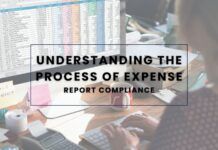







![Why AI Sales Calls Are Making Good Sales Reps Even Better [2025 Guide] ai sales calls](https://cdn-kmjmp.nitrocdn.com/YvtqmrsiHUxqerlSiZgbfzqqTARWTElr/assets/images/optimized/rev-a4aafe3/blog.peakflo.co/wp-content/uploads/2025/09/65168cf6-3001-4733-8cbc-12d5684cf449-218x150.webp)







